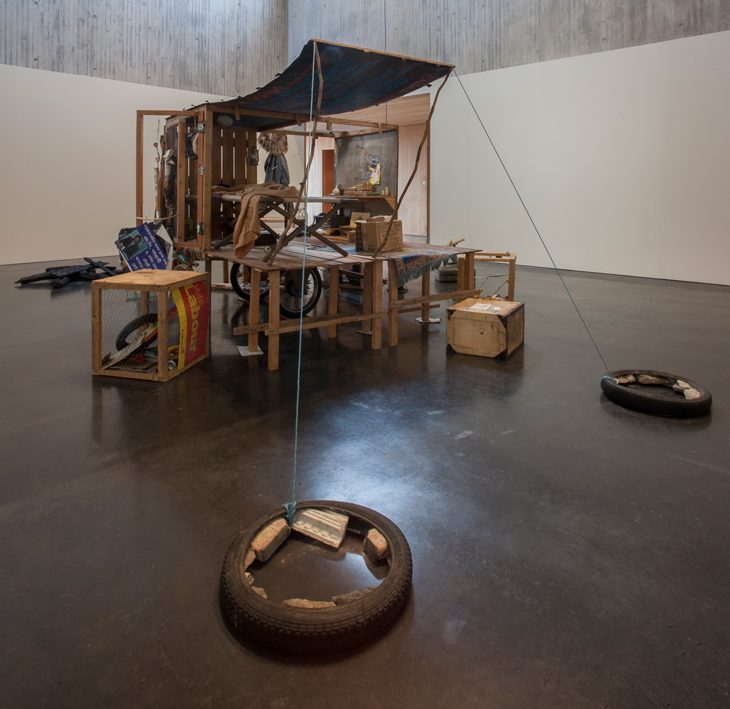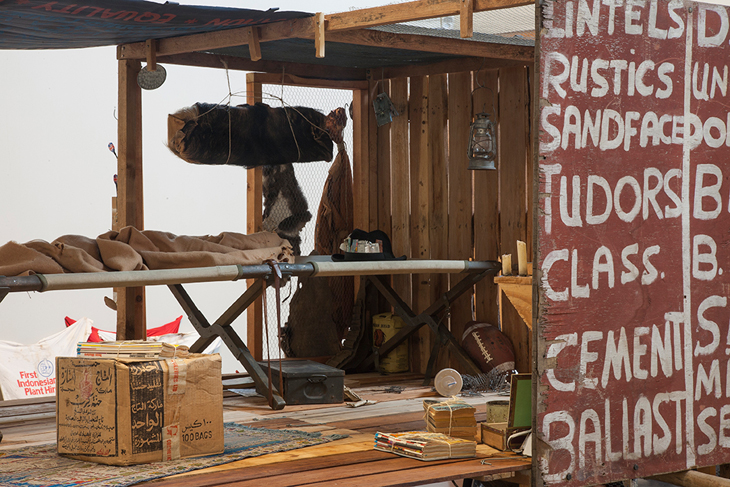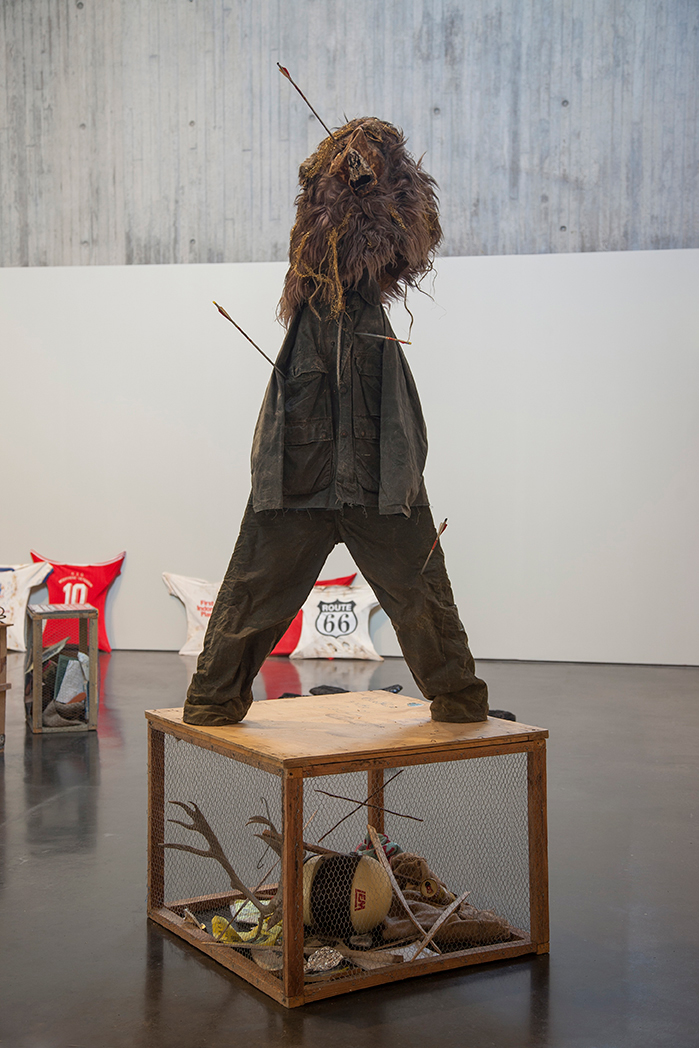My grandparents had a guest bedroom in their old bungalow in Somerset, which my brother and I used to spend hours exploring. Under the bed and in the chests of drawers there were Bristol Rovers football programmes from the 1960s, AC/DC records and other ’70s rock albums, unidentifiable lumps of metal and fragments of old toys. The best bits (as far as I, aged about 12, was concerned) were to be found in a leather case under the bed: a collection of Second World War artefacts, including a disarmed grenade, ration cards, small metal tins rusted shut and, most exciting of all, kept in a tan satchel, a gas mask.
I was reminded of this accumulation of things, of hoarded possessions, when visiting the New Art Gallery in Walsall to see Mike Nelson’s reconstruction of his sculptural installation from 1997, Lionheart. The collection of objects here comes from a much wider pool than a few generations of a Somerset family. Nelson’s piece was originally made for an exhibition at the Künstlerhaus in Bremen, in western Germany. It was a response to a particular moment in time, following the fall of the Soviet Union, as the former Communist states opened up and both people and objects began to migrate from Eastern Europe to cities like Bremen. (Nelson was thinking about Britain, too, where New Labour had just come to power, and the country was experiencing a surge in migration from across the world.) Nelson has described the feeling of the time as being at ‘a crossroads of sorts between a colonial past and an ever-expanding Europe’.

‘Mike Nelson: Lionheart’, installation view, The New Art Gallery Walsall, 2018. Photo: Jonathan Shaw
A rudimentarily constructed caravan, similar in appearance to a home-made rabbit hutch, sits in the middle of the gallery. Its walls have been folded out to make space for a camp bed. Dotted around the interior is an eclectic selection of domestic objects: a carpet from the Middle East, German books about cowboys (one, called Hallelujah Reverend, is about a gunslinging priest) and bottle caps kept in old Cuban cigar boxes. As Nelson explains, each of these materials ‘came from places other than the country they were collected in’; many of them also in some way express themes of migration and cultural exchange. The Middle Eastern carpet shows Mecca, the pilgrimage destination for Muslims; the German-language Westerns point to the imported presence of American culture throughout the years of the Iron Curtain; the cigar boxes bear the crest of Ramón Allones, a company set up in Havana by two Spanish brothers who manufactured their cigars in Cuba before exporting them back home.

‘Mike Nelson: Lionheart’, installation view, The New Art Gallery Walsall, 2018. Photo: Jonathan Shaw
The floor is littered with evidence of its absent owner having set up camp: the charcoal remnants of a burnt-out fire, scattered boxes containing postcards, old shoes and oil cans. Along the gallery’s walls, splayed out on sticks like drying animal hides, hang t-shirts printed with various graphics, from Coca-Cola and Mickey Mouse to the bands Guns n’ Roses, Metallica and Faith No More. On another wall, baseball caps, folded and mounted like animal head trophies, bear more American icons, those of sports teams and sportswear manufacturers. That the owner of the shack might be a hunter is suggested by various other objects, such as actual animal hides and rusted mantraps.
Standing at the entrance to the gallery is a life-sized scarecrow, three arrows piercing its overalls, with a lion’s head. Richard the Lionheart, although he was king of England for 10 years, spent only around six months of his reign in Britain. Most of the time he was on campaign, fighting against revolts in France and on the Third Crusade in the Middle East, which ended without the capture of Jerusalem but with an agreement to permit Christian pilgrims entry to the Muslim-held city. He was eventually killed with an arrow by a French boy who claimed that the king, in his army he had been serving, had killed the boy’s father and brothers. Before dying from the wound left by the arrow, Richard the Lionheart pardoned the boy.

‘Mike Nelson: Lionheart’, installation view, The New Art Gallery Walsall, 2018. Photo: Jonathan Shaw
Whether hunted or hoarded, the objects that constitute Lionheart seem far too numerous to fit back into the shack they surround – and many of them don’t seem as if they’d be much use to someone living an itinerant life anyway. But it’s the sort of baggage which travels with anyone no matter where they’ve set up camp, whatever the reasons that have led them to their destination.
‘Mike Nelson: Lionheart’ is at the New Art Gallery, Walsall, until 3 June.














![Masterpiece [Re]discovery 2022. Photo: Ben Fisher Photography, courtesy of Masterpiece London](http://zephr.apollo-magazine.com/wp-content/uploads/2022/07/MPL2022_4263.jpg)
‘Like landscape, his objects seem to breathe’: Gordon Baldwin (1932–2025)